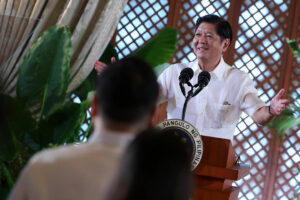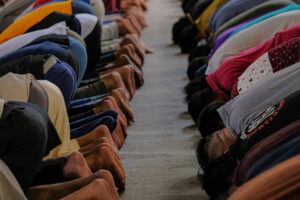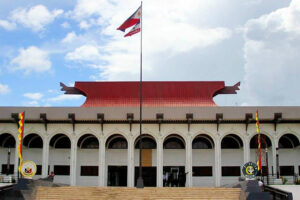Marcos orders LGUs to build more daycares

PRESIDENT FERDINAND R. MARCOS, JR. on Thursday ordered local government units (LGUs) to build more early child development centers after the Department of Budget and Management (DBM) and the Department of Education (DepEd) signed a circular to prioritize funding of about P1 billion to build 328 of these centers in low-income localities to boost learning programs for young Filipino children.
“To our local government units, we need your full commitment to ensure the success of the project. You must provide our childhood development teachers and workers with the support and resources that they need while encouraging our community members to take an active role in the child development centers,” he said in his speech at the signing of the joint circular between the Department of Budget and Management at Malacañang.
“Too many children do not have the structure care that they need in their formative years and these challenges have been accumulating for the past 30 years and cannot be solved overnight.” Of the 328 low-income villages, 89 are in Luzon, 106 in Visayas, and 133 in Mindanao including the Bangsamoro Autonomous Region in Muslim Mindanao.
Republic Act No. 6972, enacted in 1990, mandated each village to have at least one of these daycares to prepare children below five years old for formal schooling.
Mr. Marcos said at least 3,800 villages have yet to set up these centers.
“Even though it is not primarily the National Government’s responsibility, a collective effort with local governments is necessary,” Education Secretary Juan Edgardo “Sonny” M. Angara said at a Palace briefing in mixed English and Filipino.
“Otherwise, it will take too long — it’s already been a long time since the law, the Republic Act requiring municipalities to construct daycare centers, was passed.
The Second Congressional Commission on Education (EDCOM 2) said in a statement that access to early childhood care and development is still “inequitable” due to some LGUs lacking the funding needed to carry out these programs and to build daycares.
Citing the joint circular, EDCOM 2 said LGUs are required to submit funding requests for these programs pending the evaluation and approval of DepEd.
Lower income localities must also provide land of at least 150 square meters for these daycares and to handle their operation. These localities are also tasked to oversee the salaries of child development workers and teachers.
The government only spends about P3,870 per child for health, compared to the $150 (P8,556.15) other lower and middle-income countries spend on children’s health, according to an EDCOM 2 study published in May last year.
“We recognize that education goes beyond what happens just inside the classroom,” the Philippine President said in his speech.
“The government continues to find ways to support our children so they can grow and thrive and reach their full potential.”
STRICTER POLICIESMeanwhile, a Philippine senator on Thursday urged tech companies operating in the Philippines to strengthen their policies to combat online child sexual exploitation amid its proliferation in social media platforms and messaging applications.
“There is no question that the abuse and exploitation of children has proliferated and been facilitated through advancements in modern technology. With the internet and highly accessible apps, transactions have been made easier,” Senator Ana Theresia N. Hontiveros-Baraquel said in a committee hearing.
The hearing was meant to examine new ways Child Sexual Abuse or Exploitation Materials (CSAEM) are being created, trafficked, and spread online.
Ms. Hontiveros added that her office had received numerous reports of child sexual exploitation content in online platforms and messaging applications.
“We found content being shared on Facebook, Twitter, and even on Telegram, and these aren’t hidden, some are publicly advertised,” she said.
“In a simple Google search, CSAEM also came up. I want to ask our tech giants: why is this happening?” she asked.
About half a million Filipino children were forced to produce child sexual exploitation material for profit, according to a study by the International Justice Mission.
United Nations Children’s Fund said that about 20% of children aged 12-17 were prone to online sexual abuse and exploitation, with 23% of children not telling anyone of the harm they experienced.
Anti-Online Sexual Abuse and Exploitation of Children (OSAEC) and Anti-child sexual abuse and exploitation materials Act of 2022 mandated internet intermediaries, along with service providers, hosting platforms, search engines, payment systems, messaging apps, and social media networks, to prevent and take down CSAEM content.
“Internet intermediaries play a crucial role, under the law, but until now, CSAEM continues to be spread and advertised,” she added in Filipino.
The law also mandates the creation of an online sexual offenders registry for foreigners and Filipinos along with the establishment of the National Coordination Center against Online Sexual Abuse Against Children. — John Victor D. Ordoñez and Adrian H. Halili




